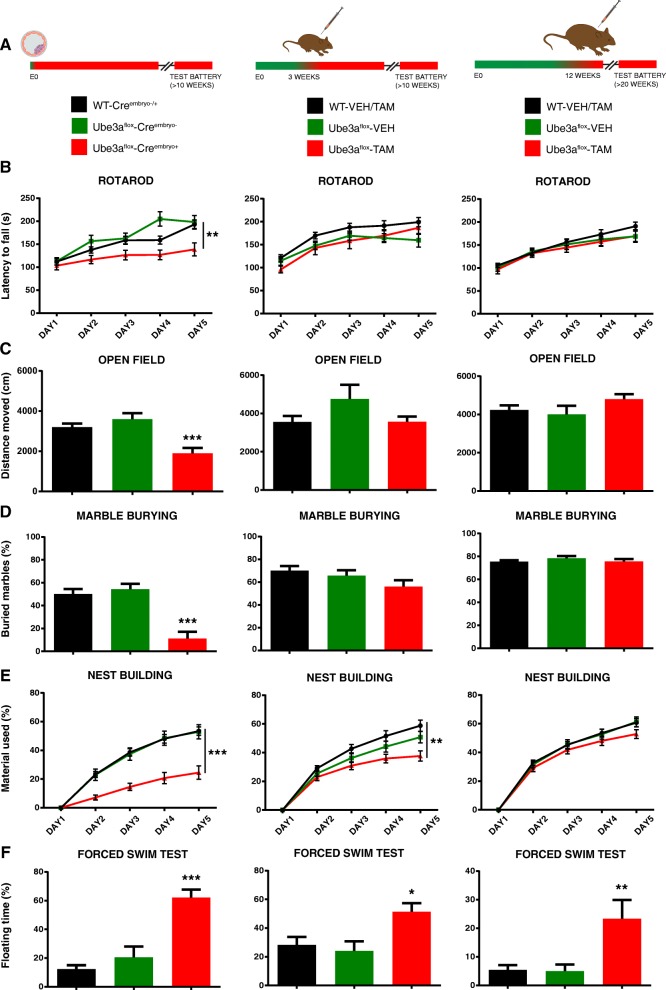Fig. 2.
Ube3a gene deletion in juvenile and adult mice does not recapitulate the phenotypes observed in embryonically deleted Ube3a mice. a Schematic depicting Ube3a gene deletion at early embryonic age, juvenile age (3 weeks) and adult age (12 weeks). b–f Behavioral tasks performed with Creembryo;Ube3amflox/p+ and CreERT;Ube3amflox/p+ mice. Juvenile and adult Ube3a gene deletion results in deficits in the forced swim test. Asterisks indicate the effect of genotype. Wild-type (WT) mice in the Creembryo;Ube3amflox/p group represent combined data of Cre positive and Cre negative animals (embryonic deletion: N for WT-Creembryo−/ WT-Creembryo+ / Ube3amflox/p+-Creembryo−/ Ube3amflox/p+-Creembryo+ mice = 15/group). Wild-type mice (WT) in the juvenile and adult-treated gene deletion group represent combined data of tamoxifen and vehicle-treated wild-type mice (Juvenile deletion: N for WT-OIL/ WT-TAM / Ube3amflox/p+-VEH/ Ube3amflox/p+-TAM mice = 11, 13, 14, 16) (Adult deletion: N for WT-OIL/ WT-TAM / Ube3amflox/p+-VEH/ Ube3amflox/p+-TAM mice = 15/group). Data shown are means with SEM (see methods and Additional file 4 for statistical tests)

